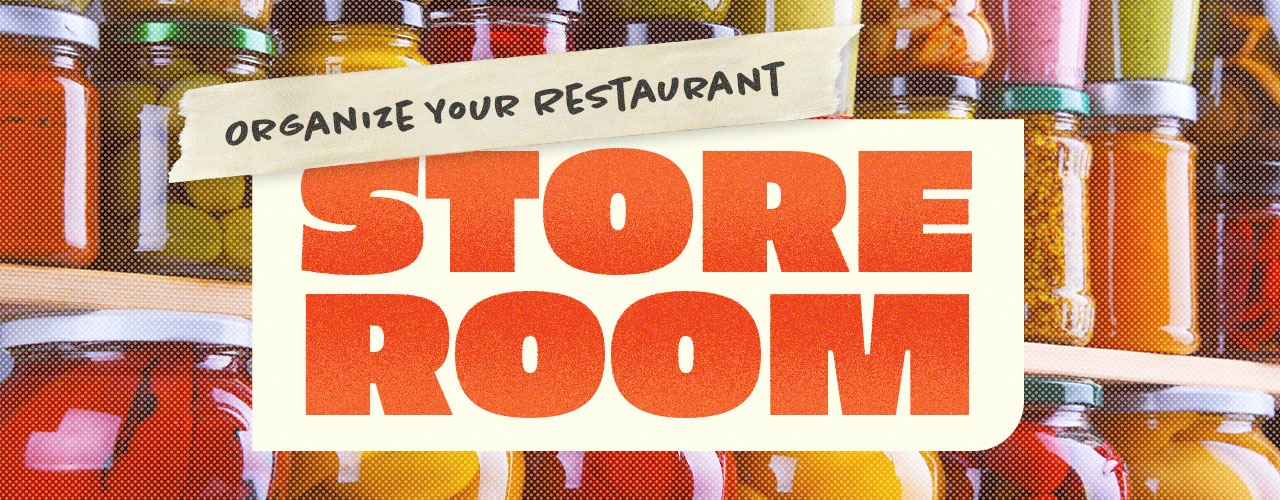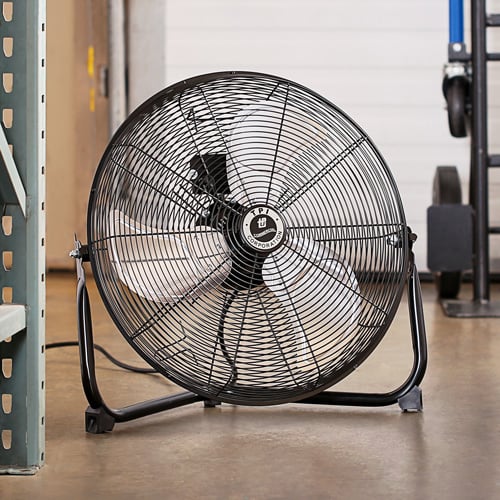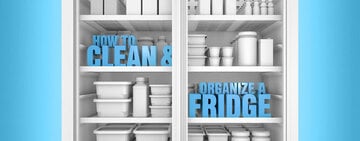
While most restauranteurs dedicate time and attention to designing their dining room layout, how you organize your restaurant storeroom is equally important. A well-organized foodservice storeroom aids in inventory management, reduces food waste, and improves cleanliness. Keep reading to learn how to organize your stock and control environmental factors in your storeroom.
Shop All Restaurant & Commercial ShelvingFIFO Inventory Method
Use our video tutorial to learn how to integrate the FIFO inventory method in your foodservice establishment.
Restaurant Storeroom Organization Tips
Implement these foodservice storeroom organization tips at your restaurant to cut back on food waste and uphold sanitation standards.
1. Apply the Rule of First In, First Out

Depending on how your storeroom is organized, using ingredients before they expire can be one of the biggest challenges for your kitchen. To ensure that your food doesn’t go bad before you can use it, try arranging your storeroom by the first-in, first-out rule. This rule, also known as “FIFO,” means that every time you get fresh supplies in, you place the new products behind your existing stock to make sure that older items get used first.
When your employees go to the storeroom to pick up ingredients, they will retrieve the older stock because it is readily accessible. As a result, you can reduce food waste in your restaurant. This method of organization may be tedious when you are stocking a new delivery, but it can save you money long-term. Here is how to perform the FIFO method:
- Locate the line of stock that you are replenishing on the shelf in your dry storage or walk-in.
- If you need to, slide over or remove your line of stock, but make sure it stays in the same order.
- Add your new stock to the back of the line of the current stock.
- Replace all of your old stock in front of the new stock, ensuring that it stays in the same order in which you removed it. This is a great time to check the expiration dates on those, too.
2. Label All of Your Storeroom Ingredients and Supplies
When arranging ingredients in your storage space, treat your storeroom like a supermarket. Create a standardized labeling system for all of your stock so your employees can find what they are looking for, even if they are in a rush. To avoid confusion, put all of your labels either above or below each product on the shelves, or directly on the food storage containers. Not only do these labels help your staff members find things, but they also act as reminders of what your kitchen needs when you are re-ordering supplies.
3. Use Restaurant Shelving

To make the most of your restaurant storage space, it is best to find shelving made from durable materials that will stay sanitary in your storeroom. These units get your food supplies off of the floor, which is a necessity for following health code requirements. Shelving units also make your ingredients easier to find.
Choose easy-to-clean shelving, like drop mat shelving, which features removable shelves you can place right in the dishwasher.
Also, instead of building out shelving horizontally, try vertically. Add wall-mounted shelves to your kitchen to free up space while still providing more storage and organization.
While it is easy to overlook them as an important feature in your establishment, shelves can help or hinder the functionality of your storeroom. Before you outfit your storeroom, be sure to learn about all the different types of restaurant shelving that are available to you.
4. Organize Your Restaurant Supplies by Category
Once you have selected the proper shelving for your storeroom, it is important to think about how you will position your supplies. Arrange your ingredients by their use or type to help your employees easily locate them during busy meal services. Separate tools only used for dinner entrees from the equipment you need during your breakfast service. Keep cleaning and sanitizing supplies away from ingredients that they could contaminate.
Also, consider putting valuable equipment and ingredients in a locked cabinet or separate storeroom that is only accessible to certain employees. This is helpful with bar supplies. You can help prevent theft by storing your liquor, mixes, and garnish supplies behind a locked door or security shelf instead of under your open bar space.
5. Find the Best Layout for Your Restaurant Storeroom

While grouping your supplies by category is a great way to get organized, it is also important to consider the overall layout of your space to optimize flow and ease of access. For example, making your shelves accessible from both front and back can help when loading new stock in the FIFO system. In the same way, you should not store heavy equipment and ingredients that are frequently used at the back of your space.
Before you set up your storeroom, think about what your kitchen staff will retrieve the most often, and prioritize those items’ positions in your layout. If your restaurant offers carry-out meals, put your takeout containers near the door so you are always prepared to package your customers’ food.
Make a Map of Your Restaurant Storeroom
Once you’ve found the best layout for your storeroom, draw up a map and put it somewhere where everyone can access it, like the door. This is helpful if you have a large storage space. When an employee wants to get in and out quickly, they can consult the map before searching the shelves. New employees will also appreciate this guide because it could save them the hassle of asking another staff member where an item is when they are having trouble finding it.
6. Train Your Restaurant Staff
Because your storeroom is a space that many, if not all, of your restaurant staff will use, it is imperative to walk all new hires through the area. Ensuring that all your staff knows where to put new stock can save you trouble if a delivery comes when you are unable to be at the restaurant. Assigning delivery management to your cooks helps them know what is being delivered.
7. Control Temperature, Light, and Moisture in Your Storeroom

Temperature, light, and moisture are three of the biggest factors in keeping food from spoiling in your storeroom. Below, we explain how these conditions can affect your supplies and how you can control them in your storage space.
Ideal Storeroom Temperature Conditions
The ideal temperature for a storeroom containing dry goods is between 50 and 70 degrees Fahrenheit. The hotter your space is, the faster your foods can spoil, especially canned goods. Heat-sensitive chocolate must be stored at temperatures ranging between 65 and 68 degrees Fahrenheit to prevent the aesthetic damage known as chocolate bloom. It is beneficial to keep a thermometer in your storeroom so you can always monitor the temperature and prevent spoiling.
Ideal Storeroom Light Conditions
Light not only impacts temperature, but it also can oxidize foods. Oxidization largely impacts fats and pigments. When fat oxidizes, the food's nutritional value breaks down and the food eventually becomes rancid. When pigment oxidizes, foods can lose their natural color and look faded or tinted gray. This can ruin the appearance of your food and may cause customers to be displeased with their meals. As a result, it is best to keep your storeroom dark. Ideally, food and drink storage rooms should be free of windows and have artificial lights that are only on when an employee is present in the room to avoid spoiling products.
Ideal Storeroom Moisture Conditions
Moisture can create environments where mold and bacteria flourish. Since both of these can be harmful to your ingredients and supplies, it is best to keep the moisture levels of your storeroom under control. In some cases, moisture can even cause your shelves to rust and damage the food they hold. Use a dehumidifying system if your storeroom has excess moisture, and be sure to empty and clean your dehumidifier regularly.
Remember to label all of your supplies, prioritize the locations of frequently used items, control environmental conditions, and use older stock first. When you find the best layout for your storeroom, staying clean and organized can help your restaurant save both time and money.





